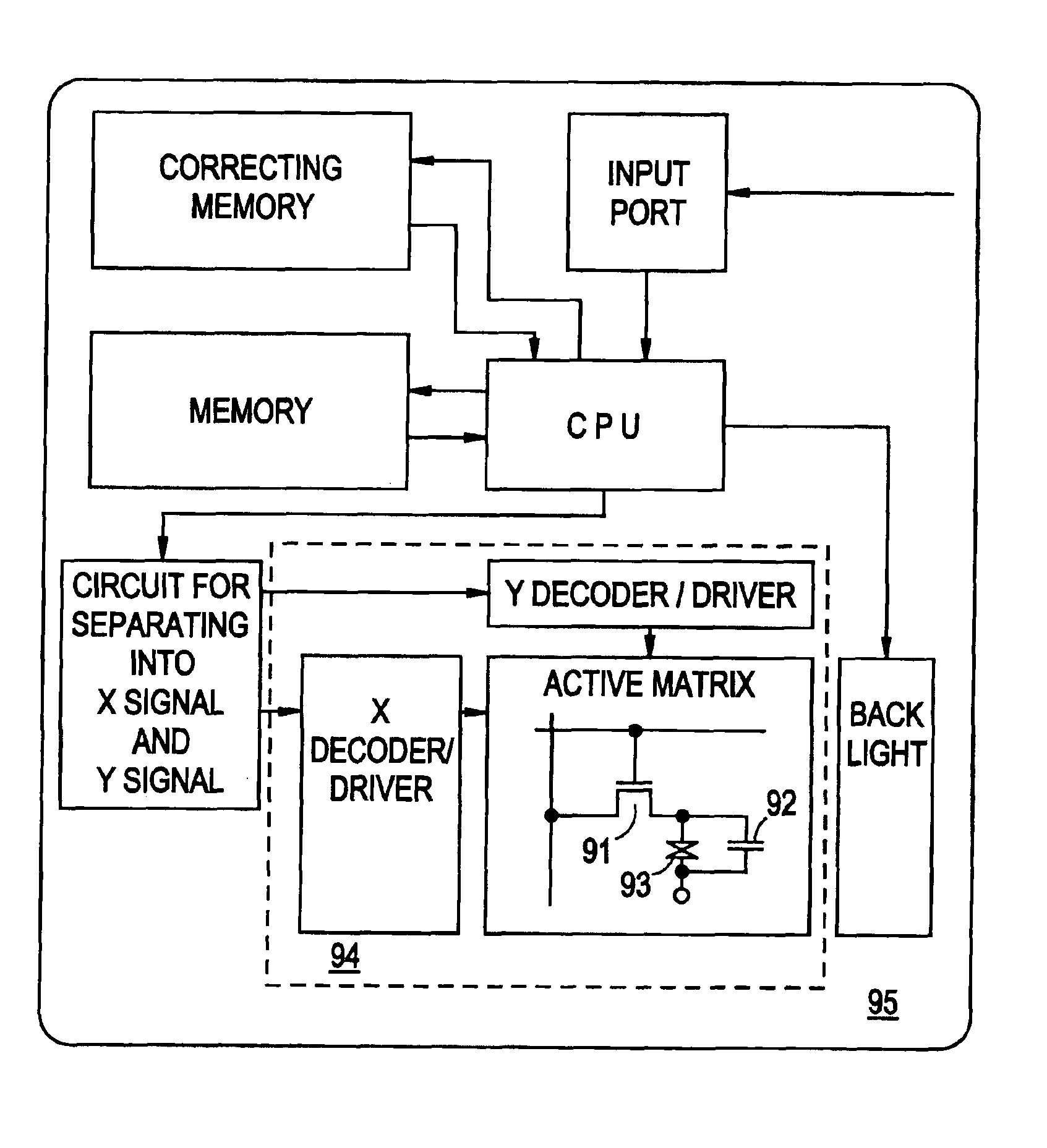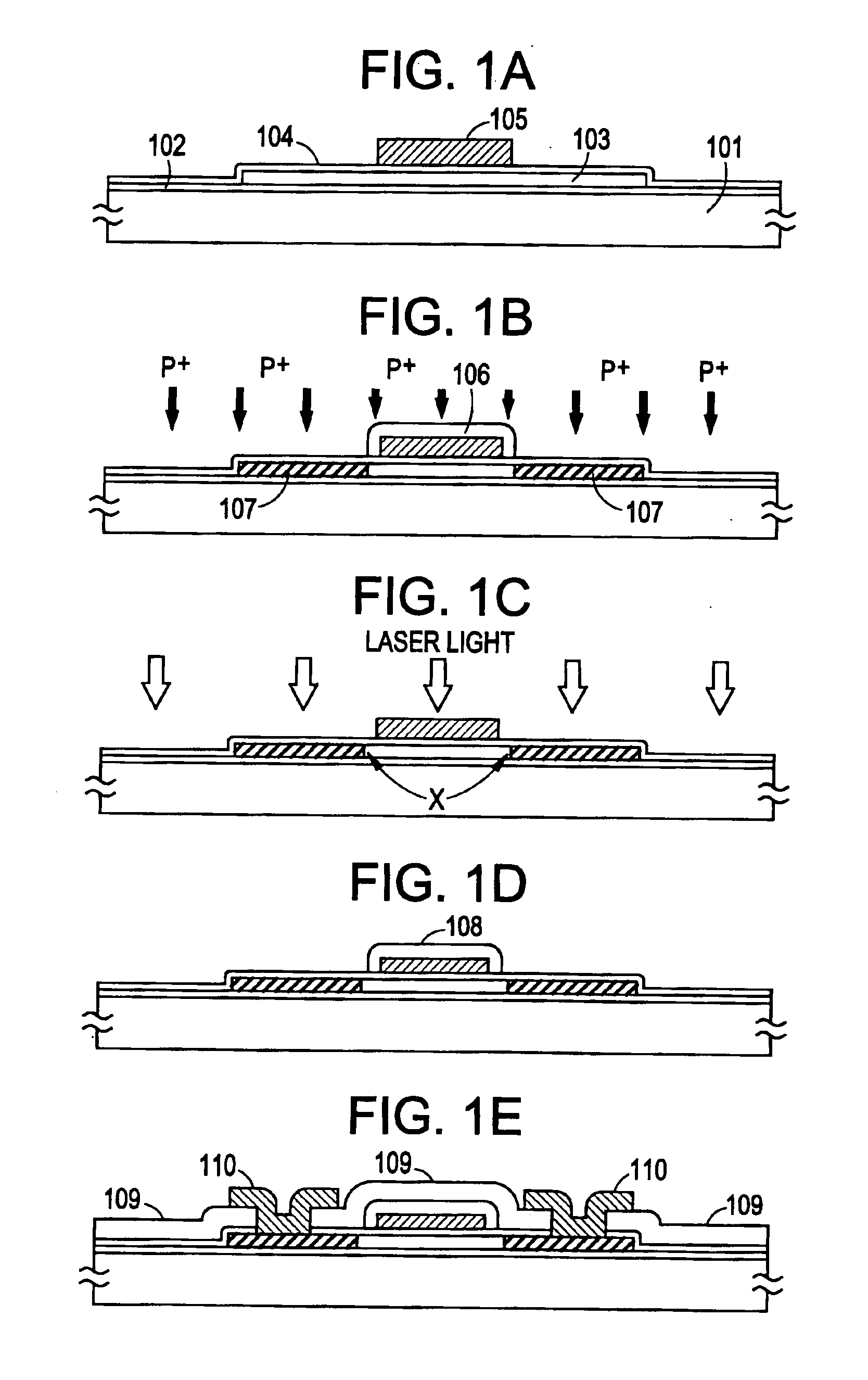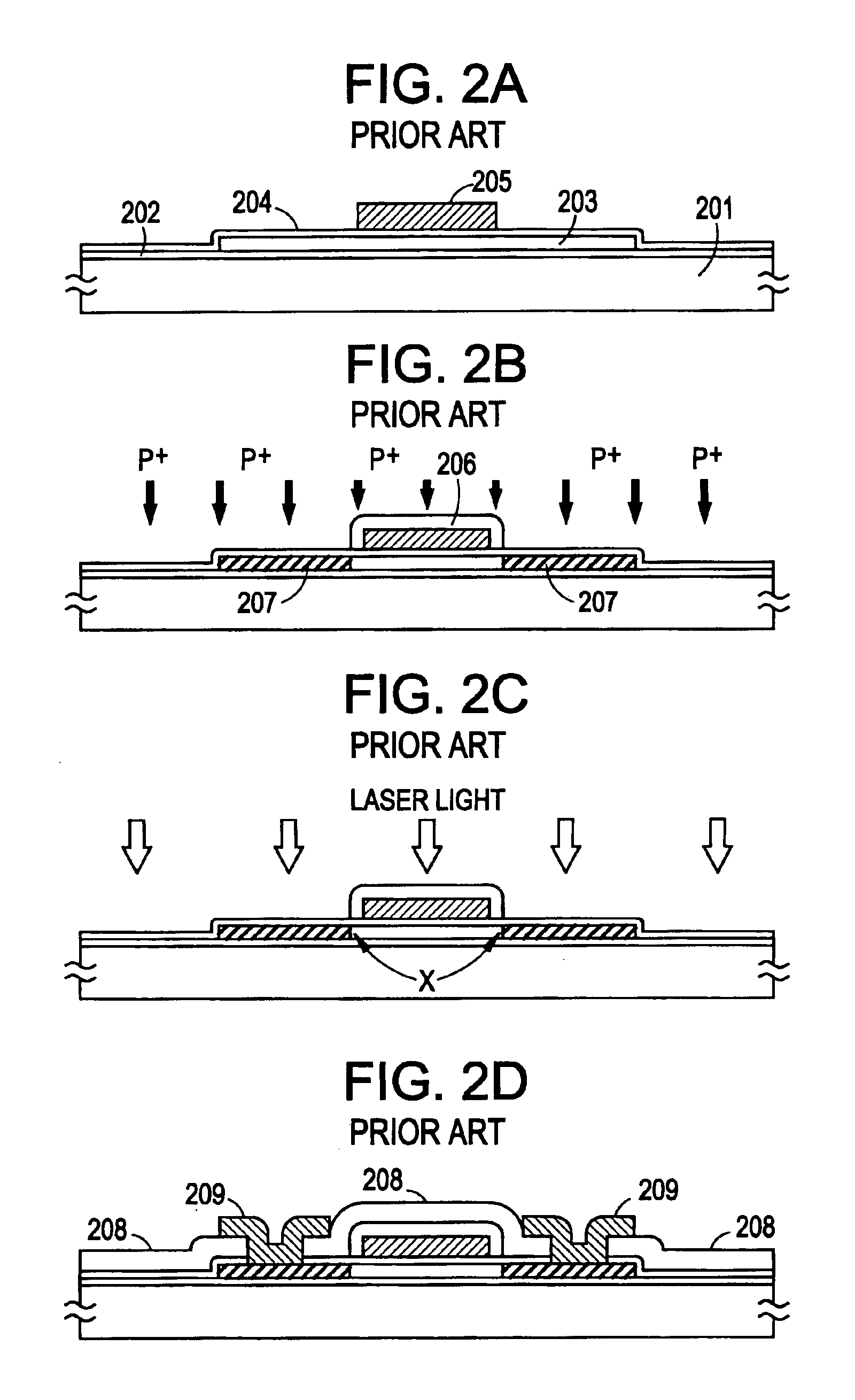Semiconductor device having a gate oxide film with some NTFTS with LDD regions and no PTFTS with LDD regions
a technology of metal insulator and gate oxide film, which is applied in the direction of semiconductor devices, semiconductor/solid-state device details, electrical equipment, etc., can solve the problems of increasing leak current (off current), remarkably large electric field, and requiring crystallinity improvement (activation). improve the insulating quality, reduce the coupling capacity, and the effect of high withstanding voltag
- Summary
- Abstract
- Description
- Claims
- Application Information
AI Technical Summary
Benefits of technology
Problems solved by technology
Method used
Image
Examples
first embodiment
[First Embodiment]
[0036]FIG. 1 shows a first preferred embodiment of the present invention. A thin film transistor is formed on an insulating substrate in this embodiment. The substrate 101 is a glass substrate, and a non-alkaline glass substrate such as Corning 7059 or a silica substrate, for example, may be used for the fabrication thereof. Taking costs into consideration, the Corning 7059 substrate was used here. A silicon oxide film 102 is deposited thereon as a ground oxide film. A sputtering method and a chemical vapor phase growing method (CVD method) may be used for depositing the silicon oxide film. The film was formed here by a plasma CVD method by using TEOS (tetraethoxisilane) and oxygen as material gases. The substrate temperature was 200 to 400° C. The thickness of the ground silicon oxide film was 500 to 2000 angstrom.
[0037]Next, an amorphous silicon film 103 was deposited and was patterned into a shape of island. A plasma CVD method and low pressure CVD method may be...
second embodiment
[Second Embodiment]
[0044]FIGS. 3 and 4 show a second embodiment. FIG. 3 is a section view taken along a dashed line in FIG. 4 (plan view). At first, a ground silicon oxide film was formed on a substrate (Corning 7059) 301 and an amorphous silicon film was formed to a thickness of 1000 to 1500 angstroms. Then the amorphous silicon film was crystallized by annealing at 600° C. for 24 to 48 hours in a nitrogen or argon atmosphere. A crystalline silicon island 302 was thus formed. Further, a silicon oxide film 303 which is 1000 angstroms thick and functions as a gate insulating film was deposited and tantalum wires (5000 angstroms thick) 304, 305 and 306 were formed (FIG. 3A).
[0045]Then a current was supplied to those wires 304 through 306 to form first anodic oxides 307, 308 and 309 having a thickness of 2000 to 2500 angstroms on the surface of those wires. Using those wires thus treated as a mask, impurities were injected into the silicon film 302 by means of a plasma doping method to...
third embodiment
[Third Embodiment]
[0050]FIG. 5 shows a third embodiment. A ground silicon oxide film was formed on a substrate (Corning 7059) 501 and an amorphous silicon film was formed to a thickness of 1000 to 1500 angstroms. Then the amorphous silicon film was crystallized by annealing it at 600° C. for 24 to 48 hours in a nitrogen or argon atmosphere. A crystalline silicon island 502 was thus formed. Further, a silicon oxide film 503 which is 1000 angstroms thick and functions as a gate insulating film was deposited and tantalum wires (5000 angstroms thick) 504, 505 and 506 were formed (FIG. 5A).
[0051]Then a current was circulated through those wires to form anodic oxide coating films 507, 508 and 509 having thicknesses of 500 to 1500 angstroms on the side and upper surfaces of those wires. Using those wires thus treated as a mask, impurities were injected into the silicon film 502 by means of a plasma doping method to form impurity regions 510 (FIG. 5B).
[0052]Then only the anodic oxides 507, ...
PUM
 Login to View More
Login to View More Abstract
Description
Claims
Application Information
 Login to View More
Login to View More - R&D
- Intellectual Property
- Life Sciences
- Materials
- Tech Scout
- Unparalleled Data Quality
- Higher Quality Content
- 60% Fewer Hallucinations
Browse by: Latest US Patents, China's latest patents, Technical Efficacy Thesaurus, Application Domain, Technology Topic, Popular Technical Reports.
© 2025 PatSnap. All rights reserved.Legal|Privacy policy|Modern Slavery Act Transparency Statement|Sitemap|About US| Contact US: help@patsnap.com



